Do you have a question about the Samsung S27AG32 Series and is the answer not in the manual?
General safety advice and warnings for safe product operation and handling.
Guidelines for safe electrical connections, power handling, and avoiding hazards.
Instructions for physically installing the monitor, including placement and ventilation.
Guidelines and warnings related to using the product after installation.
Procedures and precautions for cleaning the monitor screen and exterior.
Recommendations for ergonomic setup and posture while using the monitor.
Steps for attaching the monitor stand and preparing it for use.
Safety guidelines and warnings to follow when moving the monitor.
Guidance on ensuring adequate ventilation space around the monitor.
Instructions on how to adjust the monitor's tilt angle and vertical height.
Steps and precautions for rotating the monitor display (e.g., pivot).
Information on using an anti-theft lock device with the monitor.
Details and requirements for mounting the monitor using a VESA-compatible wall mount.
Initial steps and checks required before connecting external devices to the monitor.
Identifies and describes the various input/output ports on the monitor.
Guides on connecting the monitor to a PC using different cable types.
Specific instructions for connecting via HDMI cable.
Specific instructions for connecting via HDMI-DVI cable.
Specific instructions for connecting via DisplayPort cable.
How to connect audio output devices like headphones.
Steps for connecting the monitor to a power source.
Instructions for organizing and managing connected cables neatly.
Guidance on configuring the monitor to its optimal display resolution.
Settings and options related to gaming features like refresh rate and response time.
Options for adjusting the display aspect ratio and screen fitting.
Feature to adjust brightness in dark areas for better visibility in games.
Functionality to display an on-screen aiming point for games.
Settings for optimizing picture quality, including modes and brightness.
Controls for adjusting the overall brightness level of the display.
Settings to adjust the difference between light and dark areas of the image.
Adjustments to enhance or soften the clarity of object outlines.
Options to adjust tint, saturation, and color temperature for optimal color display.
Adjustments to control black levels for better contrast in specific scenarios.
Feature to reduce blue light emission for eye comfort during prolonged use.
Setting the display language for the on-screen menu.
Controls the duration the on-screen display menu remains visible.
Adjusting the audio volume level using the monitor controls.
Power saving feature that adjusts panel brightness to reduce energy consumption.
Feature to set automatic power-off timers for the monitor.
Feature to automatically power off the monitor after a set period to save energy.
Setting to optimize display for PC or AV sources, affecting picture size.
Configuration for automatic input source recognition.
Adjusts the responsiveness of button presses for repeated actions.
Controls the status indicator light for power and standby modes.
Built-in diagnostic tool to check for monitor issues.
Instructions for updating the monitor's firmware via USB.
Resets all monitor settings to their original factory defaults.
Software for partitioning the screen into multiple sections for productivity.
Potential issues and limitations encountered during software installation.
Hardware and OS requirements for installing the software.
Process for installing necessary drivers for the monitor.
Pre-service checks to perform before contacting support.
Using self-diagnosis to identify and resolve screen-related problems.
Verifying display resolution and frequency settings for compatibility.
A list of common issues and their potential causes or solutions.
Troubleshooting steps for various screen display problems like no image or distortion.
Solutions for problems related to audio output or lack of sound from the monitor.
Troubleshooting steps for issues originating from connected source devices.
Frequently asked questions and answers to common user queries.
Technical specifications including model, size, pixel pitch, and power supply.
Table listing supported display resolutions and frequencies for optimal performance.
Conditions under which service charges may apply, even within warranty.
Scenarios where product damage is attributed to user mishandling or incorrect use.
Other situations that may incur service charges, like natural disasters or consumable depletion.
Explanation of FreeSync technology and its usage with compatible AMD graphics cards.
| Screen Size | 27 inches |
|---|---|
| Resolution | 2560 x 1440 (QHD) |
| Refresh Rate | 165 Hz |
| Panel Type | IPS |
| Response Time | 1 ms (GTG) |
| Aspect Ratio | 16:9 |
| Color Gamut | sRGB 99% |
| Contrast Ratio | 1000:1 |
| HDR | HDR10 |
| Adaptive Sync | AMD FreeSync Premium |
| VESA Mount | 100 x 100 mm |
| Pivot | Yes |
| Curvature | Flat |
| Connectivity | DisplayPort 1.2, HDMI 2.0 |


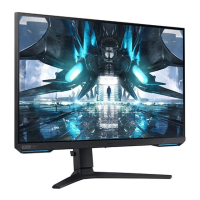
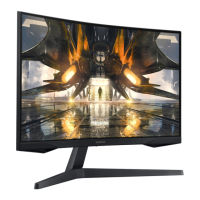
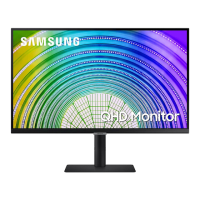
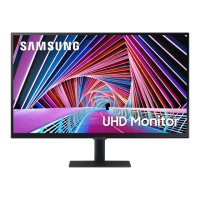

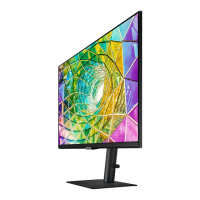



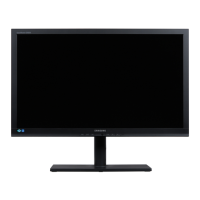
